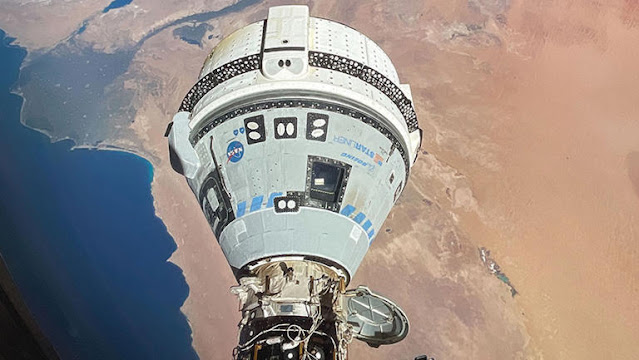After some more troubleshooting of the air leakage issues on the Space Station we talked about last week, the launch of Axiom Space's AX-4 has been put back on the calendar. Launch is scheduled for Thurs, Jun 19, @ 4:53 AM EDT or 0853 UTC on Thursday. This will be the second launch of booster B1094 and SpaceX's 76th mission of 2025, all Falcon 9 missions.
I think that means B1094 is still going to look white before it frosts over.
In the linked article about the leakages on the ISS last Friday (the 13th), we talked about how they've been dealing with leaks in the Russian Zvezda module and the areas it's connected to since 2019, and there were still pressure readings they didn't exactly have high confidence in.
"Following the most-recent repair, pressure in the transfer tunnel has been stable. Previously, pressure in this area would have dropped. This could indicate the small leaks have been sealed," NASA wrote in a June 14 update.
"Could indicate the small leaks have been sealed?" And it could be less definitive. NASA hasn't said this one is 100% fixed and done with.
"Teams are also considering the stable pressure could be the result of a small amount of air flowing into the transfer tunnel across the hatch seal from the main part of space station," officials wrote in the update. "By changing pressure in the transfer tunnel and monitoring over time, teams are evaluating the condition of the transfer tunnel and the hatch seal between the space station and the back of Zvezda."
Meanwhile, the issues with Falcon 9 B1094 are a bit better addressed. While B1094 has one prior flight, the Starlink 12-10 mission at the end of April, it apparently showed signs of a leak during that flight as well.
SpaceX's vice president of build and flight reliability, Bill Gerstenmaier, told reporters during a June 9 press conference that technicians "discovered that we had not fully repaired the booster during refurbishment — or we didn't, actually, didn't find the leak and didn't get it corrected."
But the repairs are complete now. SpaceX announced on June 12 that it has completed a new "wet dress rehearsal," or fueling test, with the rocket, and the launch vehicle is ready for the Ax-4 liftoff.
It's hard to tell from the published quote if Gerstenmaier sounded adequately
embarrassed at not having fixed B1094 until the last few days.
Although it doesn't enter into the fuel leak discussion, it's worth noting that this is a new, unflown Crew Dragon, which the Axiom crew will have the honor of naming. It is being talked about as the last Crew Dragon SpaceX will build. Until the planned replacements and upgrades to the Falcon 9 with Crew Dragon are fully operational, it's harder to be fully sure that's the last one than that it will be "among the last couple" of Crew Dragons.
The Ax-4 crew includes Mission Commander and Axiom Space's director of human spaceflight, Peggy Whitson of the U.S., in front, and the L-R around her, Pilot Shubhanshu Shukla of India, Mission Specialist Sławosz Uznański-Wiśniewski of Poland, and Mission Specialist Tibor Kapu of Hungary.
EDIT TO UPDATE 6/18 1115 AM EDT: Within a couple of hours of hitting the "Post" button, this mission was rescheduled, yet again. It's now scheduled for Sunday morning Jun 22, 2025 3:42 AM EDT

















